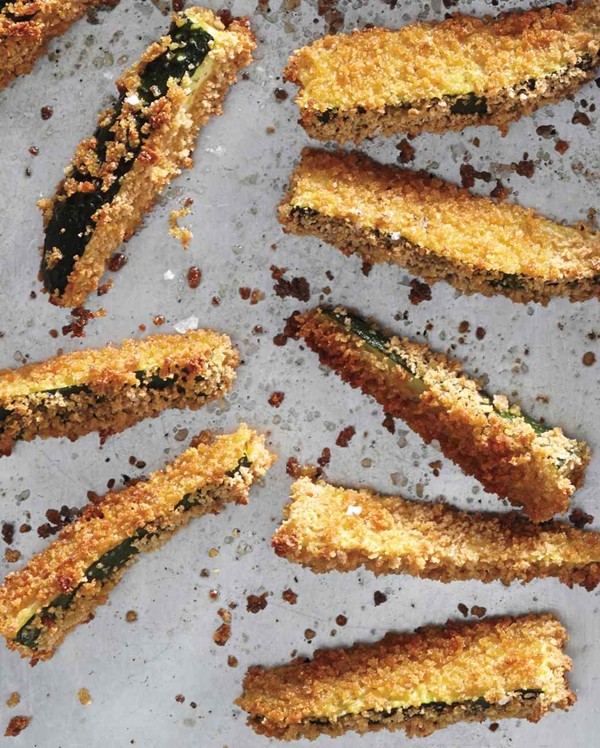What is the difference between panko and breadcrumbs?
September 7, 2017 by Darcie
Most cooks have likely used breadcrumbs in a variety of recipes as a binder, coating, or thickening agent. In the past several years, panko breadcrumbs have become the preferred choice to get the ultimate crunch on fried or baked items. Chances are you didn’t give this humble ingredient too much thought, although as with many seemingly ordinary products, there is a fascinating backstory behind it. An EYB Member recently alerted me to the interesting tale of how panko is made.
You might know that panko, the pale breadcrumbs with a light, jagged texture, came to us from Japan, but you may be surprised to learn how the bread from which is it is made was invented. During WWII, Japanese soldiers needed to make bread but did not have access to ovens. Some creative soul came up with the idea of putting the bread dough between two metal plates and “baking” it by using an electrical current that ran between the plates. The resulting loaf did not have the typical browned outer crust of oven-baked breads; it was pale through and through.
Another hallmark of panko bread is that it uses a high-protein flour. The bakery in the linked video allows the bread to rise three times; they claim that this makes the bread lighter and airier. Proprietary grinding screens are used to create the characteristic large, sliver-shaped pieces of the panko crumbs. Finally, the panko is toasted in a high-heat oven to dry it completely. Chefs and cooks like to use panko because it is produces an extremely crunchy texture. When used as a fry coating, it tends to absorb less oil than regular breadcrumbs, further promoting a crispy result.
What about traditional breadcrumbs? Although you might imagine that they are made from scraps or by-products of commercial breadmaking, the truth is that most breadcrumbs are purpose made. The dough is created in a continuous mixer and pressed through rollers to create a thin flat sheet. The sheets of dough are baked in conveyor belt ovens and after baking and cooling, the bread is ground to obtain the desired texture. The main difference between different types of crumb is the ingredients used, which range from just flour and water (usually called cracker meal) to a multitude of additives for browning, coloring, leavening or flavoring.
Photo of Crisp zucchini-panko fries from Martha Stewart Living Magazine
Categories
- All Posts (6941)
- Antipasto (2135)
- Author Articles (247)
- Book News (935)
- Cookbook Giveaways (983)
- Cookbook Lovers (257)
- Cooking Tips (110)
- Culinary News (299)
- Food Biz People (552)
- Food Online (791)
- Holidays & Celebrations (272)
- New Cookbooks (149)
- Recipes (1500)
- Shelf Life With Susie (231)
- What's New on EYB (133)
Archives
Latest Comments
- ebalk02 on Danube Cookbook Review and Giveaway
- ccav on Food news antipasto
- ccav on What foods do you look forward to the most for each season?
- ccav on Danube Cookbook Review and Giveaway
- hibeez on How cookbooks can help build resilience
- Pamsy on What foods do you look forward to the most for each season?
- Pamsy on How cookbooks can help build resilience
- DarcyVaughn on Danube Cookbook Review and Giveaway
- hettar7 on JoyFull – Cookbook Review & Giveaway
- eliza on What foods do you look forward to the most for each season?